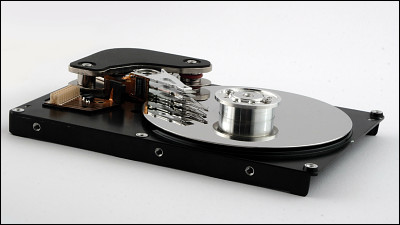``Altermagnetic'', a ``third magnetic material'' that is neither ferromagnetic nor antiferromagnetic, has finally been confirmed, which may lead to the realization of higher-density HDDs and magnetic computers.

` `Altermagnetic' ', which was expected to exist as a ``third magnetic material'' that has both the properties of ferromagnetism and antiferromagnetism , has been confirmed for the first time. Alter magnetic materials are expected to be useful in things such as the production of new types of magnetic computers.
Altermagnetic lifting of Kramers spin degeneracy | Nature
https://www.nature.com/articles/s41586-023-06907-7

The existence of a new kind of magnetism has been confirmed | New Scientist
https://www.newscientist.com/article/2417255-the-existence-of-a-new-kind-of-magnetism-has-been-confirmed/
Altermagnetism experimentally demonstrated
https://phys.org/news/2024-02-altermagnetism-experimentally.html
Magnetism is a phenomenon in which substances exert attractive or repulsive forces on other substances when placed in a magnetic field. Magnetism is a phenomenon caused by the spin of the electrons that make up an object, and when the spins of the electrons are pointing in the same direction, it becomes ferromagnetic.
Until the 20th century, it was thought that ferromagnetic materials were the only permanent magnets that could maintain their magnetic properties for long periods of time without being supplied with an external magnetic field or electric current. Ferromagnetic materials are used in various parts such as refrigerators and compass needles.
In the 1930s, French physicist Louis Nair discovered a new type of magnetism called antiferromagnetism, in which the electron spin alternates up and down. Although antiferromagnets do not have an external magnetic field like ferromagnets, they exhibit interesting internal magnetism because their electron spins rotate in alternating directions.
Furthermore, in 2019, in the crystal structure of certain antiferromagnetic materials, the ' abnormal Hall effect ' that cannot be explained by conventional theory (when an electric field is applied to a magnetic material, currents flow not only in the direction parallel to the electric field but also in the perpendicular direction) It has been confirmed that this phenomenon occurs. At this time, it seems that the current was flowing even without an external magnetic field.
In subsequent research , as a result of analyzing the crystal structure that causes the anomalous Hall effect from the perspective of electron spin, it was proposed that a new type of magnetism called 'Altermagnetism' may exist. The research states, ``Although alter magnets look like antiferromagnets, the electron spins look the same no matter what angle they are rotated from,'' which accurately explains the theory of the anomalous Hall effect. was. However, because it was not possible to actually confirm the electronic structure of the crystal, there was no certainty that alter magnetism really existed.

Meanwhile, a research team led by Juraj Krempasky at
The researchers measured how light bounced off the manganese telluride and measured the energy and speed of the electrons inside the crystal. When these electrons were mapped, it was revealed that they almost matched the simulation results for alter magnetic materials. The research team pointed out that by dividing the electrons into two groups, it is possible for the electrons to move abnormally inside the crystal, and this is the source of the properties of alter magnetism.
Krempasky said, ``The results of this study are direct evidence that we can talk about alter magnets, and prove that alter magnets behave as predicted by theory.'' .
Richard Evans from the University of York in the UK said, ``The fact that alter magnetism actually exists is a really great validation.'' According to Evans, alter magnetic materials not only allow electrons to move more freely than antiferromagnetic materials, but also have the characteristic of not having an external magnetic field like ferromagnetic materials. He suggested that by taking advantage of this property, it would be possible to create magnetic devices that do not interfere with each other using alter magnetic materials.
Science media New Scientist says, ``By using the properties of alter magnetic materials, it may be possible to increase the storage capacity of computer hard disk drives (HDDs). Commercially available devices are packed with ferromagnetic materials. 'Alter magnetic materials have the property of being vulnerable to interference from external magnetic fields. In the case of alter magnetic materials, it may be possible to pack magnetic materials at a higher density than existing ones.' .

Mr. Joseph Barker of the University of Leeds said that with the advent of alter magnetic materials, we are one step closer to realizing ``a magnetic computer that uses magnetic spin instead of electric current to perform measurements and calculations''.
Related Posts:
in Science, Posted by logu_ii







